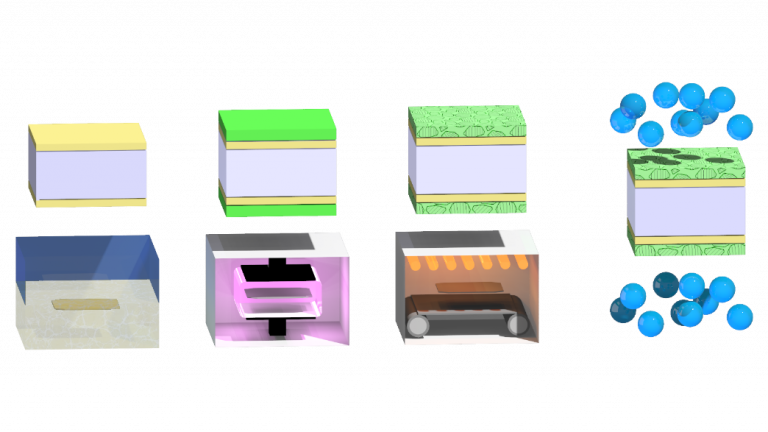High-temperature passivating contact

Passivating contacts are indispensable for achieving high conversion efficiency in crystalline-silicon solar cells. Their realization and integration into a convenient process flow have become crucial research objectives. To this aim we developed an alternative passivating contact that is formed in a single post-deposition annealing step called ‘firing’, an essential step for current solar cell manufacturing. The integration of the FPC as rear hole selective contact, co-fired with a screen-printed Ag-grid contacting a POCl3 diffused front emitter, resulted in a conversion efficiency above 22 %.
To fully mitigate metal recombination losses on the front and rear side while using a simple fabrication process, we developed passivating contact for front and rear contacted solar cells. Electron- and hole-selective passivating contacts based on in-situ doped silicon carbide (SiCx) deposited by plasma enhanced chemical vapor deposition were optimized. Their potential is demonstrated in solar cells processed with a simple process flow, in which the junction formation of the two polarities is achieved with a single co annealing step. Planar p-type cells reach a fill factor of 83.4% and an open-circuit voltage of 726 mV. By realizing front-side-textured and rear-side-planar p-type cells, an efficiency of up to 22.6% is achieved.
Several characterization techniques (FTIR, Raman, XRD, EDX and SIMS) are extensively used to evaluate the structural and chemical composition of the fabricated passivating contacts.
Please note that the publication lists from Infoscience integrated into the EPFL website, lab or people pages are frozen following the launch of the new version of platform. The owners of these pages are invited to recreate their publication list from Infoscience. For any assistance, please consult the Infoscience help or contact support.